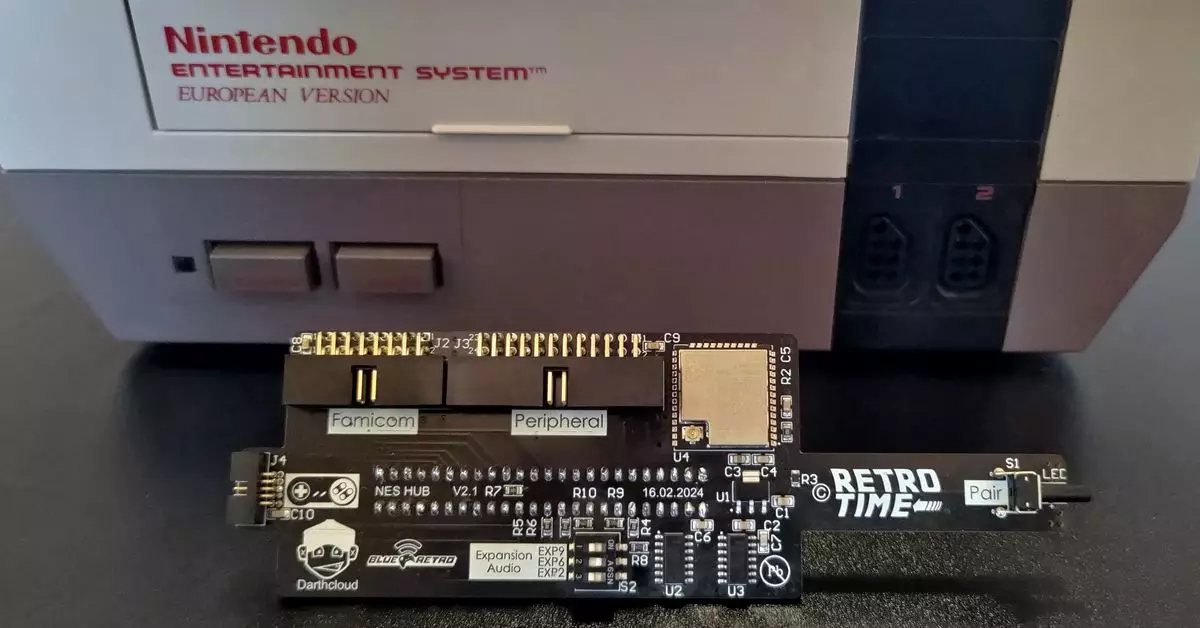The Nintendo Entertainment System (NES) holds a cherished spot in the hearts of many gamers who grew up in the 1980s and 1990s. While the console is almost 40 years old, innovations continue to emerge that breathe new life into this retro powerhouse. One such innovation is the NES Hub, a product developed by RetroTime that seamlessly connects to the expansion port found on the bottom of the console—an input that Nintendo historically left unused. What makes this device particularly intriguing is its ability to add Bluetooth connectivity, allowing users to connect up to four wireless controllers, thus revolutionizing the way we experience NES gaming.
No Hassle Installation
What often deters enthusiasts from upgrading their treasured consoles is the fear of complex installations that might involve soldering or hardware modifications. Fortunately, the NES Hub is designed for simplicity. Users don’t even need to open their NES; the gadget snaps right into the expansion port, with the most intricate part of the procedure being attaching a small Bluetooth antenna to the console’s rear. This DIY-friendly feature opens the door for countless gamers to upgrade without a worry, making the NES more accessible to tech novices.
The NES Hub’s functionality echoes a storied accessory known as the NES Four Score, which was released back in 1990, allowing gamers to connect multiple wired controllers. Interestingly, only a select few NES games supported multiplayer for up to four players, but the NES Hub ensures that these games can now be explored in a new, wireless manner. The potential for multiplayer gaming adds a fresh layer to classic games, inviting friends and family to gather for nostalgic gaming sessions—a feature that could reinvigorate interest in previously overlooked titles.
In addition to multiplayer capabilities, the NES Hub introduces a special mode designed to enhance the audio experience of select Famicom games. This additional audio channel support is something retro enthusiasts will surely appreciate, as it allows for richer soundscapes that were not attainable on the original hardware. Furthermore, the NES Hub comes equipped with extra ports to accommodate various peripherals. One such add-on allows players to utilize Super Nintendo gamepads, expanding the variety of controls at their disposal.
Future of Retro Gaming
Perhaps one of the most exciting features of the NES Hub is its Bluetooth compatibility with PCs, facilitating a web-based configuration tool via Google Chrome. This integration speaks volumes about the potential of combining retro gaming with modern technology. As we look forward to shipments beginning in December 2024, it’s clear that the NES Hub is not just an accessory; it’s a gateway to a vibrant and shared gaming experience. Through its innovative design and functionality, it underlines that old consoles can adapt to new technology while retaining the charm that drew players in decades ago.

